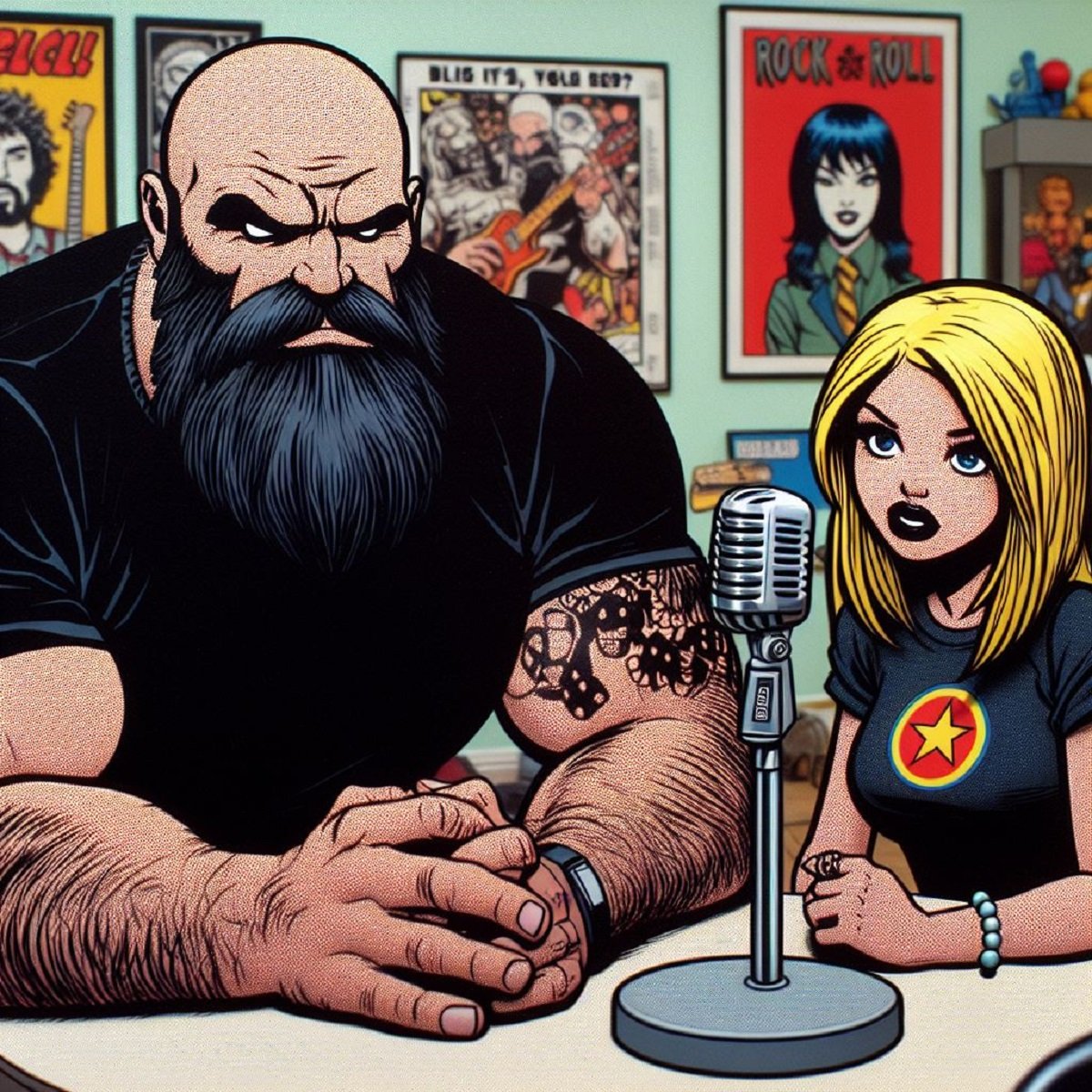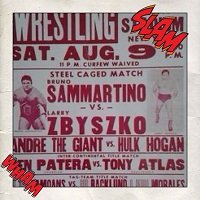Echos of the Pop: Skateboarding
By: Juan Nunez (Twitter)
Tony Hawk stood on top of a ramp on June 27, 1999. The competition is over, but the crowd is going crazy. Tony's competitors on that day are banging the boards like war drums in a show of support. It's the summer X Games. This is day 3 of the week-long extreme sports games, which were attended by 275,000 fans that year. It's the first professional sporting event broadcast on the internet live. A national TV audience is watching on ESPN.
The Birdman, as ESPN has nicknamed Tony Hawk, has failed 11 times to do a trick that some think is impossible. The physics of skateboard tricks makes it a particularly difficult task. Each failure brings Hawk closer to his goal, but each failure also brings his body crashing down with the impact of a car crash. He's made up his mind that as long as he's standing, he will keep trying. This is a trick that Tony himself has been attempting for over 10 years at this point. With the world watching, Tony Hawk lands the first recorded front side 900. Two and a half turns on a skateboard in midair. It's arguably the most significant moment in skateboarding history and the pinnacle of one of the great skateboarding careers.
The roots of Skateboarding can be traced back in part to an early 20th-century toy, the crate scooters. They were made out of a two by four that a child could stand on, a produce crate that served as the handles and roller skate wheels. At some point, someone removed the crate and left the two by four with the skate wheels.
The other roots of Skateboarding are in Surfing. Surfing as a culture in the USA started taking shape in the early 20th century. It started booming post World War 2. Surfers, most likely in California, wanted to practice Surfing when the waves weren't ideal. So they took the idea of the crate scooter without the crate, named it a skateboard, and created "Sidewalk Surfing." The earliest form of what the call Skateboarding today.
The first manufactured skateboards popped up in the 1950s in California. They were produced by surfboard manufactures. By the early 1960s, Sidewalk Surfing became a major fad. This early form of Skateboarding was an extension of Surfing and took its style and terminology from Surfing. Street Surfing was popular enough to spawn a pop song, Jan & Dean's Sidewalk Surfin'. The first Skateboard magazine, The Quarterly Skateboarder, was published in 1964.
Sidewalk Surfing as a fad died out around 1965, but in its wake came the earliest push for Skateboarding as a sport. The first two styles of Skateboarding to establish themselves as sports are Freestyle Skateboarding and Slalom Skateboarding. In freestyle, the skateboarder does a routine of tricks which judged in terms of difficulty. In Slalom, a skateboarder completes a downhill course in the shortest amount of time. The National Skateboarding Championships from Anaheim California in 1965 are considered to be the first Skateboarding competition broadcast on TV. Skateboarding competitions go back to the early Sidewalk Surfing days of the 1950s.
The early 1970s saw the birth of the modern skateboard via various innovations. The most crucial innovation was polyurethane wheels invented in 1971. These replaced the old metal skate wheels and gave skateboarders improved traction, which allowed for more difficult tricks. The kicktail was invented in 1969 and made it easier to make the skateboard jump. Eventually leading Alan Gelfand to develop the Ollie in 1978. The trick of making the skateboard jump, which is the basic building block of most modern skateboard tricks. The shape and materials of skateboards also started being experimented with during this era.
The 1970s saw the invention of a new style of Skateboarding, Vert Skateboarding. This added aerial tricks to Skateboarding, and broad it closer to it's surfing roots via ramps that closely resembled big waves in shape. Originally this style of Skateboarding developed in empty pools, but moved to specially built ramps in skateparks in the late 1970s. Vert Skateboarding overtook Freestyle skateboarding as the most popular form of Skateboarding by the end of the decade. Popular Vert skateboarders include Bob Burnquist, Tony Hawk, and Pierre-Luc Gagnon.
The 1980s saw Skateboarding reach a new audience via the distribution of VHS tapes. Tapes specifically highlighted popular skateboarders and skateboard teams and allowed them to showcase their skills and flex their creativity outside of official competitions. An example of this type of VHS tape is 1987's Wheels On Fire.
The late 1980s saw a bust in the popularity of Vert Skateboarding, which lead to the closing of skate parks. This along with the popularity of VHS tapes lead to the creation and popularity of Street Skateboarding. Taking a base of freestyle skateboarding, and adding innovations from vert Skateboarding and totally original street tricks, Street Skateboarding became the dominant form of Skateboarding since the late 1980s to today. Popular street skaters include Natas Kaupas, Mark Gonzales, and Eric Koston.
As much as it's a sport, Skateboarding is also a culture. Often an outlaw subculture that has been legally banned and discouraged at various points in its history. It spawned its own slang terms, magazines, music, and fashion. Thrasher magazine, founded in 1981, is one of the primary distributors of the skateboarding culture. Skateboard specific shoes such as the Airwalk Ollie patch and Vans Duracap started being released in the 1980s and remain popular to this day. The 1980s and 1990s saw the emergence of Skate-Punk. A sub-genre of Punk Rock that mixed the speed of Hardcore Punk, the melodies of Pop Punk, and Skateboarding culture.
A few months after the 900, Activision released Tony Hawk's Pro Skater. It launched one of the most popular video game franchises of the past 20+ years. It generated over $1 billion throughout 17 games released between 1999 and 2015.
As of the writing of this article, the future of Skateboarding is unclear. An overexposure from reality TV shows, especially from MTV in the late 2000s-early 2010s has arguably taken away some of the coolness from Skateboarding. A resurgence in the popularity of Scooters in the 2010s has also arguably taken away from the popularity of Skateboarding. Skateboarding has always had a very cyclical history, and this appears to be one of the downward trending periods.
On the flipside, the 2020 Tokyo Summer Olympics will host for the first men's and women's skateboarding events. It's a strong indicator of the maturation from kids fad to the mainstream sport of the course of 70+ years, and it shows the potential that Skateboarding could still have in the future. With its fairly low barrier of entry and its ability to be practiced on any street, the Olympics may lead to a new international Skateboarding boom in the coming years.
If you found this article interesting consider becoming a Patreon supporter. That is how When It Was Cool keeps our website and podcasts online, plus you get lots of bonus content including extra and extended podcasts, articles, digital comics, ebooks, and much more. Check out our Patreon Page to see what's up!
If you don't want to use Patreon but still want to support When It Was Cool then how about a one time $5 PayPal donation? Thank you!


















































